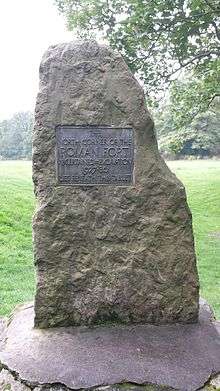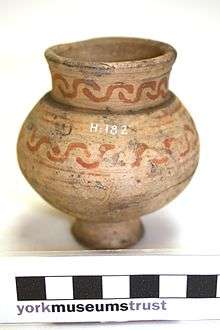Philip Corder
Philip Corder (died 1960) was a British archaeologist and president (1954-1957) of the Royal Archaeological Institute.[1]

Excavations
Corder undertook the first excavations at the Roman fort at Malton (Derventio) in 1927-1930, along with his colleague Dr John Kirk. The material from this excavation formed the core collection of the Malton Museum in Malton, North Yorkshire.[2] Corder and Kirk also undertook a series of excavation at the Roman Villa at Langton.[3][4]
In 1928 Corder published the results of his major excavations of a kiln site at Crambeck.[5] The Crambeck excavations, undertaken in autumn 1926 and summer and autumn of 1927 with students of Bootham School, identified three types of pottery uniquely produced at the site, now known as Crambeck Ware.[5]

Publications
- Corder, P. 1928. The Roman Pottery at Crambeck, Castle Howard. Roman Malton and Districe Report 1
- Corder, P. 1930. The Defences of the Roman Fort at Malton. Roman Malton and District Report 2
- Corder, P. and Kirk, J. L. 1932. A Roman villa at Langton, E. Yorkshire. Roman Malton and District Report 4
- Corder, P. 1941. Verulamium, 1930-40. Verulamium Museum Publications No. 2
References
- ↑ "Past Presidents of the RAI". Royal Archaeological Institute. Retrieved 27 October 2013.
- ↑ Jones, R. 2009. Roman Malton. Malton: Malton Museum
- ↑ Corder, P. and Kirk, J. L. 1932. A Roman villa at Langton, E. Yorkshire. Roman Malton and District Report 4
- ↑ Historic England. "Monument No. 61982". PastScape. Retrieved 21 July 2014.
- 1 2 Corder, P. 1928. The Roman Pottery at Crambeck, Castle Howard (Roman Malton and District Report no.1). York: William Sessions